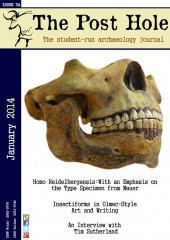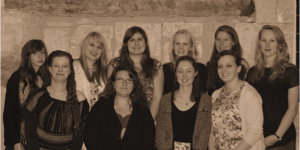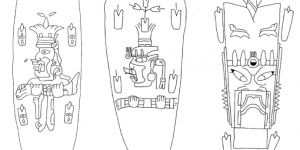With the rise of the technological age, we have seen great changes occur within archaeology as a discipline. The most important change has been accessibility; television, radio and the internet now construct how we perceive archaeology. This ranges from the impact of Time Team to Wikipedia. An aspect of this technical movement often overlooked is blogs. More frequently associated with fashion and celebrities, there is now an increase in academic blogs. The SAA (Society for American Archaeology) conference consisted of a lecture detailing the impact of blogs in disseminating knowledge, not only to professionals, but also the wider public. People across the world shared their blogs via “Doug’s Archaeology”, one of the most popular archaeological blogs, highlighting the sheer number of blogs out there.
As part of an exploration into the blogosphere, third year students at The University of York, including myself, created individual blogs on a subject of our own choice as part of the module “Visual Media in Archaeology” ran by Sara Perry. This included blogs about home towns and their features, historic figures, and archaeological sites. Others explored more conceptual ideas, showing the range of concepts that came as a result of the module. The intent of the blogs was to bring a relatively unknown topic to a wider, or possibly different, audience. By using Google’s “blogspot”, we could see our viewing ratings and the source it came from. So we embarked on our voyage of discovery into the world of the internet. Initially, we were all fairly apprehensive: would anyone read our blogs? What difference would it make? But as we progressed through the module, we began to see it less as a blog, and more as a knowledge-making space. The more posts we did, the higher our viewings went. Although generally our viewing numbers were not particularly extraordinary, many received positive feedback, and it became clear that we had made an impact on some of the public.
Blogs are now moving to the forefront of archaeology, and they will only keep expanding. Our venture into blogging has highlighted the potentials that can be found within the internet, and specifically blogs, in assisting the growth of archaeology. It has been described as the next step in publicising the discipline, widening the audience learning about innovative research projects alongside many other subjects. By taking a look at our blogs through our aggregate site, you will hopefully see a new perspective on the internet as an area of exploration of knowledge.
More information on blogs and to view the third year students one, can be found at http://visualmedia-archaeology2013.blogspot.co.uk/
Bibliography
- Rocks-Macqueen, D. (2013). Great Archaeology Blogs. 2nd July 2013. Doug’s Archaeology. Investigating the Profession and Research. [Online]. Available at http://dougsarchaeology.wordpress.com/






